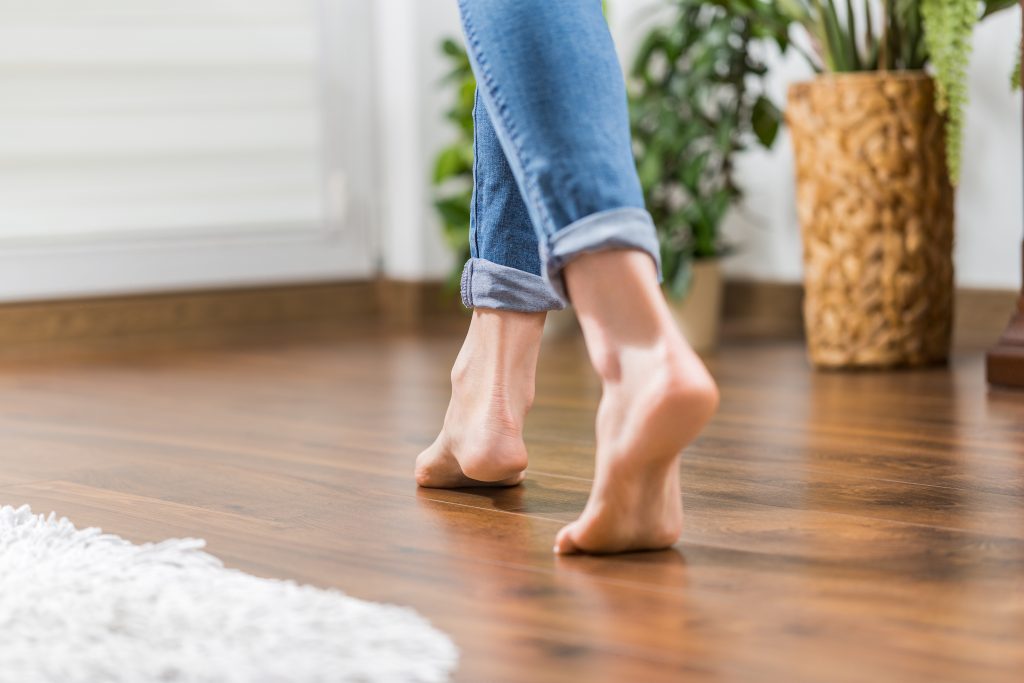One of the beautiful aspects of modern flooring is that you can get an authentic single material or an excellent manufactured imitation of it. That’s where engineering flooring comes in. Laminate and engineered hardwood are available in addition to solid as hardwood flooring options because they boast wood in the material. It’s the manufacturing process that differentiates them. But since engineered resembles solid hardwood the most, it’s particularly tough to decide between them. Here are the pros and cons of each, so you’ll know what to expect if you choose either of them:
Appearance
Looks-wise, solid hardwood and engineered flooring are very similar to each other. Only the well-trained eye can tell them apart by looking closely at the grain patterns and feeling the texture.
Another point to consider is the selection of colours and textures. If you want to match the flooring elsewhere in your house, you’ll have much better luck with solid hardwood. Even if it’s a different wood species, you can match the height and colour with a little professional help. Engineered flooring is limited in how many hardwood and pattern designs it can imitate since creating it is a more time-consuming process. It cannot replicate the unique tones and grains of hardwood which can vary even within the same species.
Manufacturing
As is evident from the name, solid hardwood planks are only natural wood throughout in whole pieces. There come in different cuts which show unique grain patterns: plain-sawn, rift-sawn, quarter-sawn and live-sawn.
Engineered flooring has plywood, fiberboard or hardwood in a middle layer surrounded by a bottom layer of hardwood and a top layer of hardwood or hardwood veneer. It can have up to nine layers and works on wood and concrete subfloors equally well. The layers are greatly compacted to create flooring that is much denser than solid hardwood, though the wood species may differ from the top layer.
Installation
Hardwood planks must be nailed or glued down to wood or plywood subfloors. They don’t work well on concrete unless they are at ground level or above ground level, so you don’t often find them in basements, bathrooms or laundry rooms.
Engineered flooring can adapt as a floating floor, meaning it doesn’t have to be nailed or glued down, but it can also be installed using stapling and fold-and-lock methods. It works well with any subfloor and is common in kitchens. However, since it’s lighter than solid hardwood, it can sound more hollow, and you can remedy this by stapling down the planks instead of floating them.
A concrete subfloor would require glueing down, while a wooden subfloor can accept glueing or nailing. When you adhere the flooring planks to the subfloor instead of floating them, they will not affect each other with any heat or water expansion as much. It’s common for people with either flooring option to use felt paper as an underlayment for ease of installation or to sandwich over the subfloor.
Wear
You might be wondering: Why does engineered flooring have so many layers? They make the flooring denser and more durable and water-resistant to the point of being waterproof. Engineered flooring does not warp and flex upon contact with moisture like solid hardwood flooring does. While it accepts stains, it cannot usually be refinished as much as solid hardwood due to its thin layer of actual hardwood over plywood. That means after a few times of refinishing, it must be replaced. The exceptions are some engineered floors that have a thick wear layer, especially hand-scraped, so it depends on the quality of the flooring you choose and what you want to achieve. There are also different finishes that affect surface wear.
The durability of solid hardwood comes from its heavyweight. You can alter the appearance of solid hardwood flooring with texture and wash treatments to create a distressed look, lighten or darken the colour. It accepts paints, stains and varnishes with ease and can be resanded and refinished several times for many years.
Ease of repair
Both types of flooring resist spills fairly well. Although solid hardwood flooring is more susceptible to dents and moisture damage from lingering water or pet stains, a professional can simply match the plank and then sand and refinish the whole floor. Some DIY homeowners enjoy replacing damaged planks themselves.
If you have engineered flooring planks and they are on a floating floor, you will have to take out some of the other planks to get to the damaged area. Glued-down planks mean a messy and time-consuming job of removing pieces and scraping away adhesive, whereas nailed-down planks simply need prying off. Replacing a damaged plank requires you to have the manufacturer match it since it’s tricky to stain-match it yourself.
Cost
Solid hardwood flooring costs more to purchase than engineered flooring. The cost of engineered flooring depends on the plank thickness, number of wood veneer layers, and wood species. Installation of engineered flooring is cheaper due to its lighter weight and versatility in installation. At the same time, though, hardwood flooring has more options for plank widths, finishes, and decorative trim.
To learn more about our flooring options or to request an estimate, contact us.

